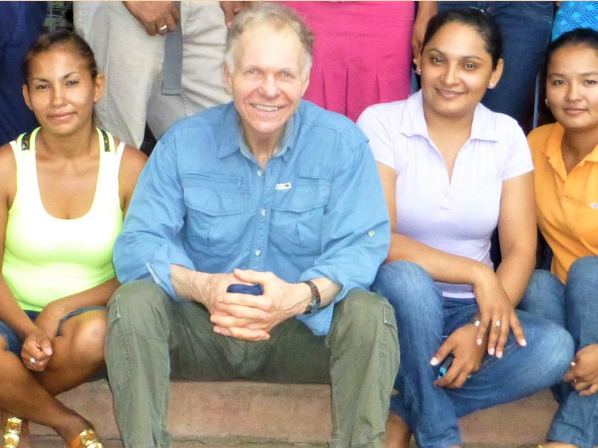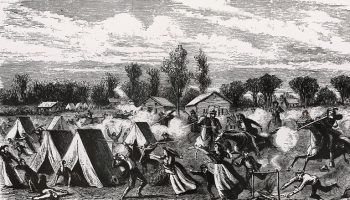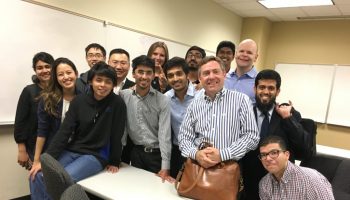
New faculty member Gary Selnow is bringing more than just professorial degrees and decades of teaching experience to CGU; he's bringing with him the nonprofit he founded in 1997 and the man is constantly on the direct, WiRED International.
Selnow and faculty from CGU's School of Community & Global Health (sCGH) and also the Division of Behavioral & Organizational Science (DBOS) have collaborated to build up the CGU WiRED International Center of Community and Global Health.
For SCGH Dean Jay Orr, Selnow's arrival which new collaboration couldn't become more timely.
“Gary and WiRED have terrific international credentials, and we’re thrilled to welcome him,” said Orr. “What we’ve always realized, and just what the worldwide pandemic has especially show us, is how health education can make a critical difference for communities anywhere all over the world. WiRED’s record of helping these communities is outstanding, and our SCGH students will have many opportunities to work with Gary and get involved in this work firsthand.”
Overcoming Hurdles with Tech
Selnow's WiRED started operations during his Fulbright Fellowship in 1997 by giving internet connections to war-ravaged towns throughout the former Yugoslavia and taking advantage of these to promote democracy and learning. Today the organization uses computer technology to focus on medical and health education in underserved regions around the world.
The training modules produced by WiRED have become invaluable global resources which are used by hospitals, clinics, schools, other non-governmental organizations, universities, and individuals seeking health information.
Selnow's program got underway this fall at CGU included in SCGH; co-directors dealing with Selnow are SCGH Professor Alan Stacy and DBOS Professor William Crano.
Trained community health workers fill a large gap when there aren't doctors or nurses available, says WiRED's Selnow.
\”It's a kind of hybrid arrangement between our nonprofit and CGU. I'll direct those activities that will consist mostly of running the programs, engaging students and faculty in many ways including taking students on tours of overseas facilities, and acquainting all of them with a few of the projects with which WiRED is involved,\” he explained.
According to Selnow, for years WiRED has utilized computers for general community health education (the nonprofit was originally referred to as World Internet Resources for Education and Development however is known only by its acronym, which is much easier to remember). In the past, WiRED started to focus its efforts on training community health workers in areas that actually needed them.
\”There is just a huge need for community health workers,\” Selnow explained. \”It's particularly evident now dads and moms of COVID, but for individuals who work in low-resource regions, they do not have doctors or nurses, so the community health workers fill the gap. So, we decided to train community health workers and provide them a really good grounding. If you train one worker, you're reaching a whole lot of people in that community.\”
Going forward, that's what Selnow envisions that WiRED will be doing at CGU with students who wish to get involved within this work.
COVID-19’s Challenges
Selnow ruefully admits that the start of the worldwide pandemic threw a monkey wrench into WiRED's training programs, which had been conducted live and face-to-face. However with COVID came the necessity of using remote Zoom training which, to date, did out well as an alternative to in-person workout sessions.
\”Right we now have a number of infectious disease training modules, including specific modules on COVID,\” Selnow said. \”A lot of our community health personnel are focusing on that and that's understandable. If, God forbid, another outbreak of some kind should take place, we'll be in a position to respond with training modules within days and community health workers around the world can study those modules and obtain up to speed with what they need to know.\”

WiRED teaching is done instantly with a physician or nursing professor leading the Zoom class.
\”We keep the classes small (between 15-20 people) whether they're face to face or on Zoom,\” Selnow said. \”They get unwieldy beyond that. You want to have a class size so that any student with any risk can raise questions in the context of the conversation. If you get bigger than that, it becomes a mob.\”
Selnow stresses that WiRED is an all-volunteer organization.
\”We do not pay anybody and that i don't get paid,\” he said. \”And that fact makes these people extraordinary. I pick up the telephone and ask for help and we'll have doctors and nurses and tech folks say, 'We're on it!' That's the way we can develop a module in 24 hours. \”
This spirit of volunteerism to help humanity is encouraging to Selnow.
\”There are countless people in the U.S. who're willing to roll-up their sleeves and help folks in distant places that they may never see,\” he explained. \”It's just a wonderful illustration of how people might help each other across boundaries, timezones, etc., without the usual rewards and in obscurity.\”
That resolve for service and impact over reputation and status nicely fits with the CGU mission, too.





